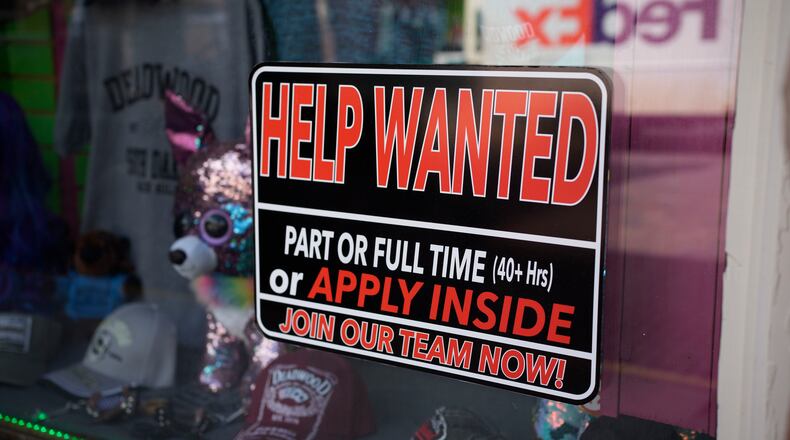WASHINGTON — The U.S. economy is sparking confusion and whiplash almost as fast as it’s adding jobs.
Barely more than a year after the coronavirus caused the steepest economic fall and job losses on record, the speed of the rebound has been so unexpectedly swift that many companies can’t fill jobs or acquire enough supplies to meet a pent-up burst of customer demand.
In many ways, the news has been cause to cheer: The economy grew from January through March at a red-hot 6.4% annual pace. And in the current quarter, that pace is thought to be accelerating to nearly double-digits.
But the full portrait of the U.S. economy is rather more nuanced one. Here is a closer look at five vital signs:
Jobs
Employers last month added 559,000 jobs on top of 278,000 in April. Those would ordinarily be seen as quite healthy numbers. Yet against the backdrop of record-high job openings and free-spending consumers, forecasters had expected much more hiring. Some economists had envisioned the recovery from the pandemic recession driving monthly job growth of 800,000, 900,000, even 1 million or more.
What explains the shortfall?
Economists point mainly to what they call a short-term mismatch: Companies are posting job openings faster than applicants can respond. After all, many Americans are contending with considerable tumult at home — health issues related to COVID-19, child-care problems with schools slow to reopen, career uncertainty after many jobs permanently vanished over the past 15 months. And some people, earning more from federal and state jobless aid than they did when they worked, are taking their time before pursuing another job.
Some say the labor shortage is nothing that can’t be solved the old-fashioned way: By raising pay and offering more generous benefits and working conditions. In fact, that process appears to have begun: Average hourly wages rose solidly in April and May.
Consumers
After months cooped up at home, millions of consumers have rushed back out again, in buoyant spirits and eager to spend, their finances bolstered by $1,400 federal stimulus payments earlier this year. Among the affluent, sharp gains in home and stock market equity have further emboldened their impulse to spend.
Consumer confidence is high. And Americans stepped up their spending again in April after a powerful gain in March fueled by $1,400 stimulus checks to most individuals.
That said, Rubeela Farooqi, chief U.S. economist at High Frequency Economics, sees cautionary signs. Confidence and spending, though still healthy, have trended lower. And retail sales were flat in April after having surged in March, suggesting that the positive effect of the stimulus checks might have faded. Similar trends occurred late last year after the effects of earlier federal stimulus money began to wear off.
Inflation
Financial markets endured an unwelcome jolt last month when the Labor Department reported that consumer prices had jumped 0.8% from March to April and 4.2% from 12 months earlier — the largest year-over-year increase since 2008.
Some leading critics, including former Treasury Secretary Larry Summers, have been warning that President Joe Biden’s trillions of dollars in federal stimulus money risk igniting inflation and forcing the Federal Reserve to resort to interest rate hikes, which could derail the economic recovery.
But Fed Chair Jerome Powell and many economists say they think the inflation surge will prove short-lived. They say it reflects mainly temporary supply-chain bottlenecks that have forced up prices but that should ease over time. For now, though, shortages of lumber, computer chips and other materials have contributed to inflation pressures.
Housing
The housing market has served as a source of economic strength and resilience during the pandemic, supported by ultra-low mortgage rates and the desire of many locked-down families to move to more spacious digs to accommodate work-from-home needs.
But with prices having risen beyond the reach of many and with the supply of homes for sale severely limited, the housing boom has lately shown signs of fatigue. Home construction tumbled 9.5% in April — a drop that economists attributed, at least in part, to builders postponing projects because of accelerating costs for lumber and other supplies that have contributed to swelling home prices.
In April, sales of new homes dropped nearly 6%, and purchases of existing homes fell 2.7%. Many would-be buyers will remain on the outside looking in as long as a shortage of available homes keeps sale prices elevated.
About the Author
The Latest
Featured


